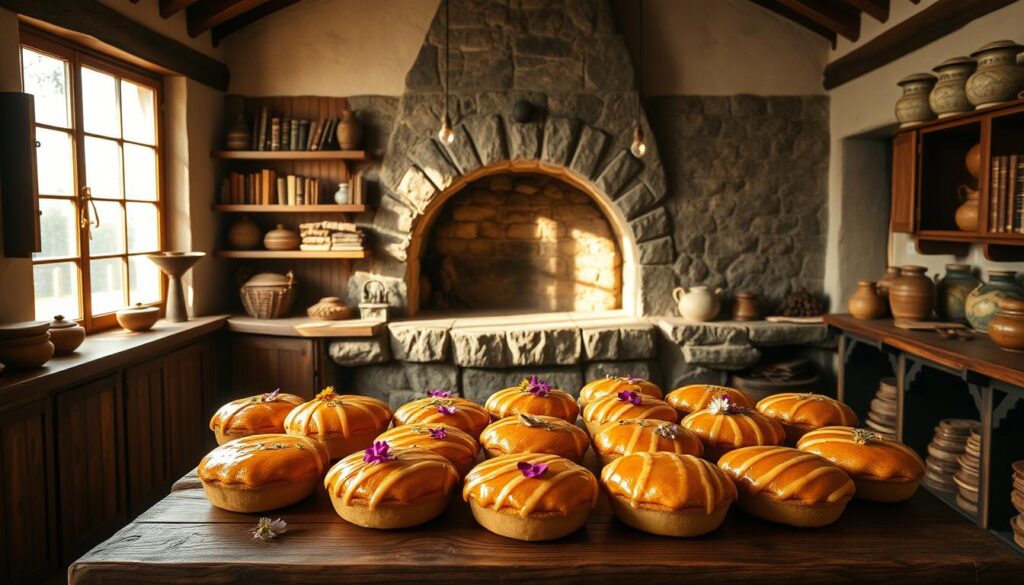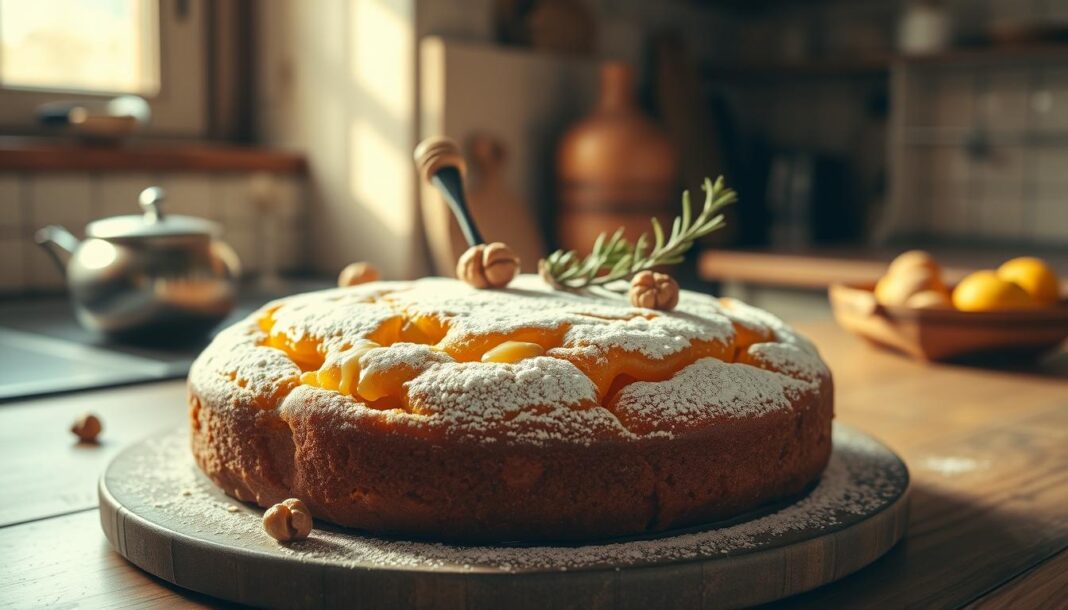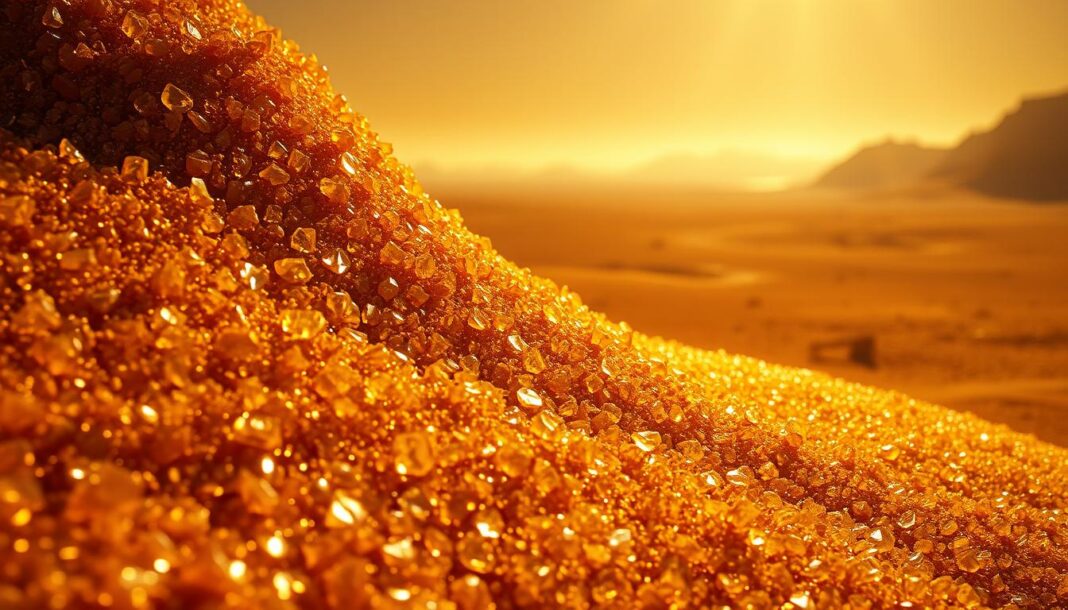Indulge in the rich flavors of honey cakes, a treat that has been savored across cultures for centuries. At Historical Foods, we explore the art and science behind creating the perfect cake that balances sweetness with deep, rich flavor. Our comprehensive guide will walk you through the historical significance of these delightful desserts and provide a tested recipe that uses pure honey as the primary sweetener.
By combining traditional methods with modern baking science, we ensure that your honey cake turns out moist and delicious every time. Whether you’re a novice baker or an experienced culinary enthusiast, our guide will empower you with the knowledge to perfect your baking technique, focusing on the right ingredients and time management.
Key Takeaways
- Understand the historical significance of honey cakes across different cultures.
- Learn the science behind creating moist and flavorful honey cakes.
- Discover a tested recipe that uses pure honey for natural sweetness.
- Master the techniques for selecting the right ingredients and managing baking time.
- Apply traditional methods with modern baking science for perfect results.
The Rich History of Honey Cakes
Honey cakes have been a staple in many cultures for centuries, with a rich history that spans across various civilizations. Their significance extends beyond being a mere dessert; they’ve played a crucial role in culinary traditions and cultural practices.
Literary References and Cultural Significance
Honey cakes have appeared in notable literary works, such as The Hobbit, where they’re described as Beorn’s specialty given to the dwarves, Gandalf, and Bilbo. Similarly, in Game of Thrones, they’re mentioned as a favorite of Catelyn Stark. These references highlight their cultural significance across fictional worlds. For more on honey cakes, visit our honey cakes page.
Traditional Uses Throughout History
Historically, honey was the primary sweetener in many cultures, including Russia, before refined sugar became widely available. Honey cakes served both practical purposes, such as sustenance for travelers, and ceremonial roles, like symbolic offerings in religious ceremonies. The historical relationship between beekeeping and honey cake production reveals fascinating connections between agriculture, cuisine, and cultural practices over time.

What Makes the Perfect Honey Cakes Recipe
Baking a honey cake that’s both moist and flavorful involves more than just following a recipe; it demands an understanding of the underlying chemistry. The unique properties of honey play a crucial role in determining the final texture and flavor of the cake.
The Science Behind Moisture and Texture
The hygroscopic nature of honey is key to its ability to retain moisture in baked goods. This characteristic, combined with the right baking techniques, can result in a cake that stays fresh longer. Techniques like the hot milk method help to thin out honey before it’s added to the batter, creating a fluffier texture.
Balancing Sweetness with Pure Honey
Honey contains over 200 compounds that contribute to its complex flavor profile, making it a more nuanced sweetener than refined sugar. The type of honey used can significantly affect the final flavor of the cake, allowing for customization based on preference. For instance, a buckwheat honey can add a robust flavor, while a wildflower honey provides a lighter taste.
| Type of Honey | Flavor Profile | Best Use |
|---|---|---|
| Wildflower | Light, floral | Delicate cakes |
| Buckwheat | Robust, molasses-like | Spiced or robust cakes |
| Clover | Mild, slightly sweet | Traditional honey cakes |
Essential Ingredients for Moist Honey Cakes
Moist honey cakes require a thoughtful selection of ingredients, which we’ll explore in detail. The quality and type of ingredients significantly impact the final product’s texture and flavor.
Selecting the Right Honey
For honey cakes, the type of honey used can greatly affect the flavor profile. Almost any runny honey works well, but it should be liquid at room temperature. Milder honeys like wildflower or clover provide a mellower flavor, while darker honeys such as buckwheat or chestnut offer more intense flavors. Using a cup of high-quality honey is essential for achieving the best taste.
Key Dry Ingredients
The dry ingredients play a crucial role in the structure of honey cakes. Flour is a primary component, with all-purpose flour being a popular choice due to its balanced protein content. Other key dry ingredients include baking powder and salt, which help in achieving the right texture and flavor balance. The quality of these ingredients can significantly impact the final product.
Wet Ingredients That Enhance Moisture
Wet ingredients are vital for maintaining the moisture and richness of honey cakes. Butter and eggs are essential components, contributing to both moisture and structure. Using room temperature eggs ensures they incorporate more effectively into the batter. Additionally, ingredients like sour cream or buttermilk can enhance tenderness and activate leavening agents, resulting in a moist and flavorful cake.
Step-by-Step Honey Cakes Recipe
A well-made batter is essential for achieving the ideal texture in honey cakes. To start, we need to understand the importance of proper ingredient incorporation and the techniques involved in preparing the batter.
Preparing the Batter
To prepare the batter, we first preheat our oven to 180°C (350°F) conventional. In a bowl, we sift together flour, cornstarch, baking powder, baking soda, salt, and a hint of ground cinnamon. In a large bowl, we combine melted butter, oil, vanilla, and eggs. We then heat milk and honey until hot, adding it to the butter mixture along with the dry ingredients. The resulting batter will be thin, which is crucial for achieving the right texture.
| Ingredient | Quantity | Purpose |
|---|---|---|
| Flour | 2 cups | Structure |
| Honey | 1 cup | Moisture and Flavor |
| Eggs | 2 | Binding |
Baking Techniques for Perfect Results
Once our batter is ready, we pour batter into a prepared pan and bake for about 30 minutes, or until a toothpick comes out clean. It’s crucial to preheat oven correctly and position the rack to ensure even heat distribution. We check for doneness using the toothpick test and visual indicators.
The Honey Glaze Finish
After baking, while the cake is still warm, we apply a honey glaze made by combining honey and butter. This step enhances moisture and flavor, allowing for maximum absorption. Proper cooling techniques are then applied to prevent moisture loss, ensuring the ideal final texture. As the cake cools, it retains its moisture, resulting in a deliciously tender crumb.
Variations of Traditional Honey Cakes
Honey cakes have inspired a range of creative interpretations, from traditional to modern recipes. These variations showcase the versatility of honey as a primary ingredient, allowing for diverse flavor profiles and textures.
Russian Medovik Multi-Layer Cake
The Russian Medovik is a multi-layered honey cake that stands out for its thin, cookie-like layers and rich creamy filling. The filling often combines honey with dulce de leche, creating a complex sweetness that complements the cake layers perfectly. This traditional dessert showcases how layering can transform a simple honey cake into an elaborate treat. For a detailed recipe, you can explore our guide on fantasy meals for inspiration.
Twice-Baked Hobbit-Inspired Honey Cakes
Twice-baked honey cakes, inspired by The Hobbit, offer a unique texture that’s both crispy on the outside and moist on the inside. The process involves baking the cakes once, then drizzling them with honey and baking again. This method creates a delightful contrast in textures, making these cakes a fascinating twist on traditional honey cakes.
Modern Adaptations and Flavor Additions
Modern bakers continue to innovate with honey cake recipes by incorporating various flavors and ingredients. Additions like lemon zest, nuts, or different spices can enhance the natural profile of honey. For instance, incorporating nuts such as walnuts or almonds can add texture and nutritional value. Our table below summarizes some popular variations:
| Variation | Key Ingredient | Effect |
|---|---|---|
| Lemon Honey Cake | Lemon Zest | Brightens flavor |
| Nutty Honey Cake | Walnuts/Almonds | Adds texture and nutrition |
| Spiced Honey Cake | Cinnamon/Nutmeg | Enhances warmth and depth |
Serving and Storing Your Honey Cakes
Now that you’ve mastered the art of baking honey cakes, let’s explore how to serve and store them. Honey cakes can be stored at room temperature in an airtight container for a few days. For longer storage, they can be refrigerated for up to a week or frozen for up to a month.
To serve, honey cakes can be enjoyed chilled, at room temperature, or slightly warmed. Enhance the honey flavor with whipped cream or fruit compotes. Proper wrapping techniques will prevent moisture loss during storage. When stored correctly, the honey cake remains moist and flavorful.


